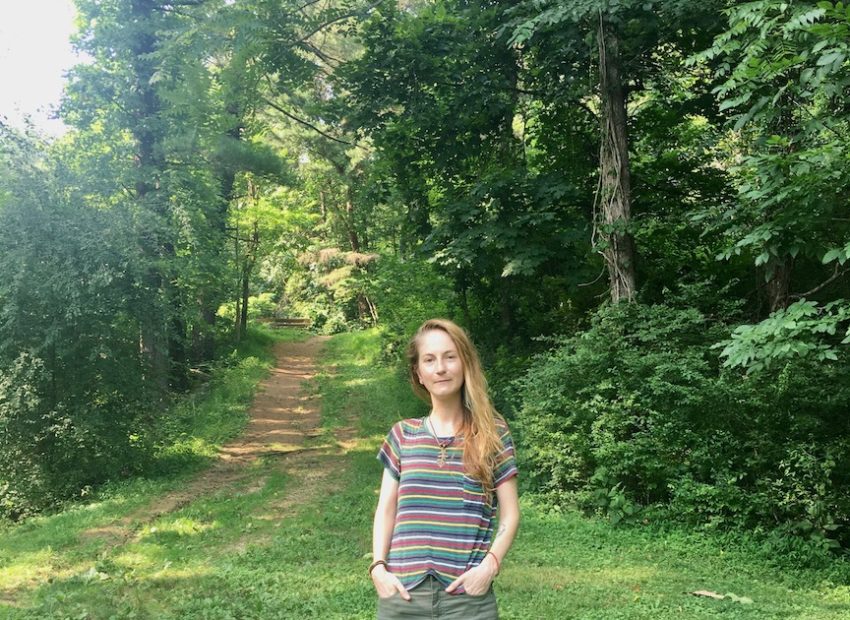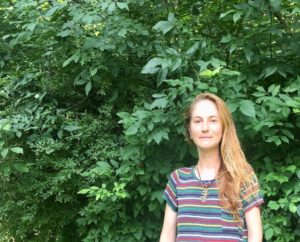 Delaney, who is close to finishing her master of science degree in Environmental and Plant Biology at Ohio University, is working with Athens Conservancy as a trail steward. Much of her work has concentrated on the John Knouse Trail, being built in memory of the Conservancy’s founder.
Delaney, who is close to finishing her master of science degree in Environmental and Plant Biology at Ohio University, is working with Athens Conservancy as a trail steward. Much of her work has concentrated on the John Knouse Trail, being built in memory of the Conservancy’s founder.
“We’re honoring John by transplanting and salvaging some of the herbaceous plants that would otherwise be damaged or killed during the trail-building process,” she explains. “The trail’s route was carefully designed, and the locations of the many large native plant colonies were taken into account. But with Canaan Preserve’s healthy and diverse herb flora, it would be impossible to create a trail that didn’t sacrifice some plants along the way.”
So Delaney carefully digs them up. “I find the plants a nice new home, keeping them in the same general area with their other plant friends,” she says. “We take the unique ecological needs of each species into consideration when choosing where to replant them, and often try to find a place where individuals of the same species are thriving. This tells us that the area has the right amount of sunlight, soil moisture, and so on for each plant.”
Delaney – along with some generous help from her plant-loving boyfriend Jack – estimates she has saved 30 to 50 plants representing four or five native species. These include:
- Maidenhair Fern (Adiantum pedatum) — a lovely, delicate fern that is a favorite of Athens Conservancy and graces our logo. The fern’s shallow root system makes it an ideal candidate for transplantation.
- Goldenseal (Hydrastis canadensis) — named for its brightly colored rhizome. Due to overharvesting, this plant is considered threatened or endangered in many states in the eastern U.S. Delaney says they were extra careful when digging up this special plant, and always took a moment to admire its yellowy-gold rhizome before replanting it.
- Black Cohosh (Actaea racemosa) – portions of the John Knouse Trail are lined with dozens of black cohosh plants. Delaney explains, “They might not look like much yet but be sure to visit in mid- and late summer to see their spectacular and unique blooms. We salvaged the plants that were in danger, and tucked them into a much safer home.”
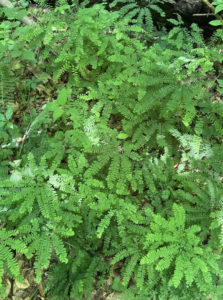
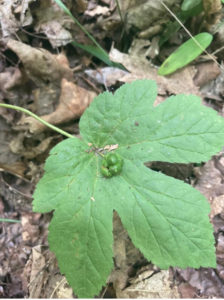
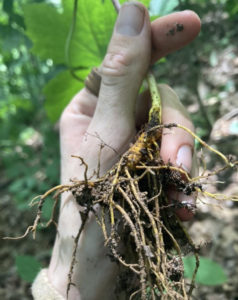
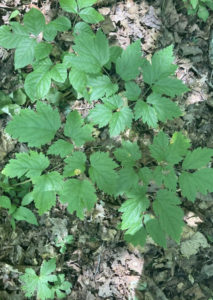
(L-R: Colony of Maidenhair Fern along the John Knouse trail; Goldenseal with an immature fruit; Goldenseal rhizome and roots; Black Cohosh plant)
Delaney grew up in Lexington, KY, and earned her undergraduate degree in biology at Earlham College in Indiana. After graduating, she honed her interest in plant biology by working 3- to 9-month stints doing forestry field work for three years in such far-flung places as New Hampshire and the Everglades, the Ozarks and Michigan’s upper peninsula.
Through those experiences, she “met a lot of cool people and cool plants.” She chose Ohio University for graduate studies because it has a program focusing entirely on plants. Her studies center on native herbaceous plants that grow in the forests. “I love them, they’re like old friends to me,” she admits.
Delaney says the university has been a good fit … and she’s pleased to have connected with Athens Conservancy, too.
“The Conservancy’s preserves are amazing,” she says, “and I especially love the wildflowers. In all of my travels around the eastern U.S., I’ve never seen anything like the spring wildflowers in Bluebell Preserve.”
We’re glad Delaney’s connected with us, too … and so are all the little plants she’s rescued.

